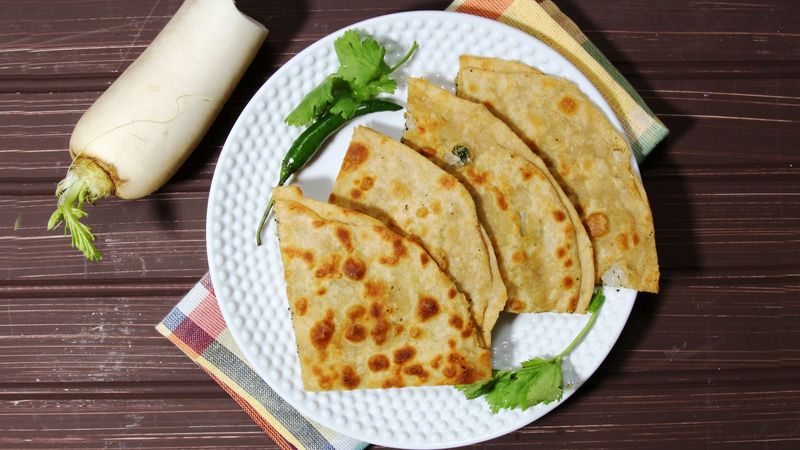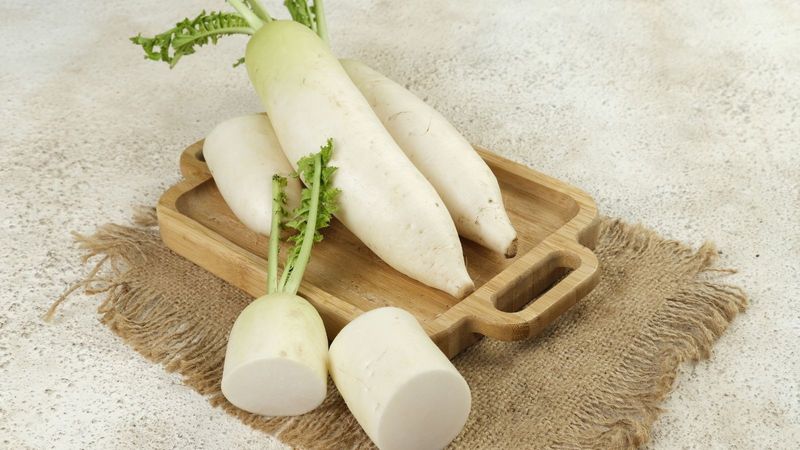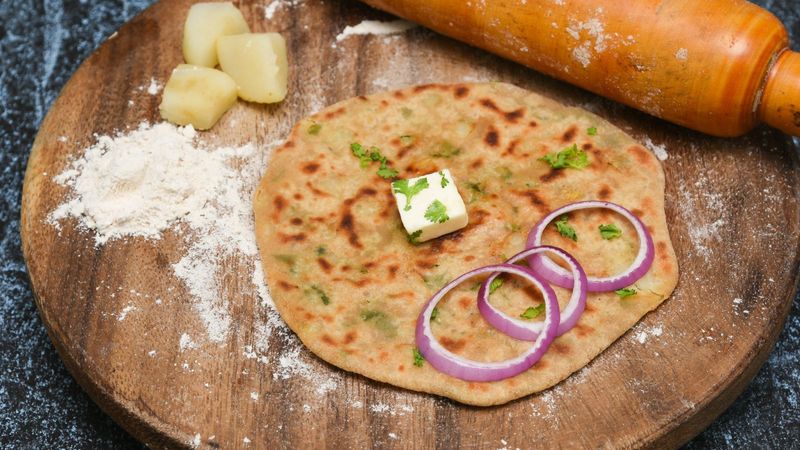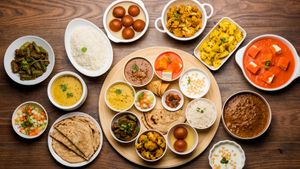Flaky and soft parathas with a flavourful and spicy radish filling, mooli parathas can be had as a snack or even for a proper meal. A staple in the North Indian states, especially in Punjab, mooli paratha recipe is generally prepared during the winter months, when radish is readily available everywhere. With its strong flavour and aroma, mooli parathas are truly unique. Best accompanied along with hot cups of tea, or curd and pickle, mooli parathas are a delicacy. Check out this mooli paratha easy recipe to get the authentic taste of Punjab at the comfort of your home.
What is mooli paratha?

Mooli is the Hindi term used for radish, and parathas refer to whole wheat Indian flatbreads. Mooli parathas are basically flatbreads stuffed with a flavourful filling of radish. A savoury dish, originating from the land of Punjab, Punjabi mooli parathas are mainly eaten as a breakfast item during winter months. Not only delicious, but equally healthy mooli parathas are soft on the inside and flaky and crisp on the outside.
What are the benefits of radish?

Radish or mooli are root vegetables, which come in different shapes and colours and have a spicy, peppery taste with a strong aroma. Since mooli paratha recipe is a widely popular Indian dish, here are some of the health benefits of consuming radish that you should be aware of:
- Radishes are extremely low on the carbohydrate content, and have very few calories, which makes it an ideal vegetable for those suffering from high blood sugar, as it aids towards reducing the blood sugar levels, thus reducing the risk of diabetes.
- Radishes are also found to have antioxidant properties that help fight against inflammation and reduce the risk of cancer.
- High in nutrients, such as Vitamin C and other mineral compounds like calcium and potassium, consuming radish also lowers one’s risk of heart disease.
- Having natural antifungal properties, radishes help in preventing fungal growth that can lead to infections.
- Consuming radish also helps promote gut health, as it is high in fibre content and good for preventing constipation.
Make the widely loved Punjabi mooli paratha at home with this easy recipe
Ingredients to prepare mooli paratha

Mooli paratha ingredients to prepare the whole wheat dough:
- 2 cups whole wheat flour
- ¼ to ½ tsp salt
- 1-2 tsp oil/ghee
- Water
Mooli paratha ingredients for stuffing:
- 1 radish, medium to large size
- 1-2 green chillies, finely chopped
- Garam masala
- Red chilli powder
- Ghee
- Salt
- White butter
Steps to prepare homemade mooli paratha

Follow the given steps to prepare mooli paratha easy recipe:
- Knead a soft and pliable dough using the mooli paratha ingredients consisting of the whole wheat flour, salt, oil and water. Once done, set it aside.
- Grate the radish and set aside for 15-20 minutes, and thereafter squeeze out the water from it, and add in the finely chopped green chillies.
- Make small balls out of the kneaded dough, and roll them into small circles of about 5-6 cm and dust with wheat flour.
- Place a sufficient amount of the radish stuffing that you had set aside into the rolled dough. Be careful not to use too much stuffing, or else the mooli parathas can break while rolling.
- Upon the stuffing sprinkle garam masala, salt and red chilli powder as per your preference.
- Once the mooli paratha ingredients stuffing is completed, cover it with the other rolled out dough and join the edges.
- Roll out the dough into the size of a paratha.
- In a tava or pan, griddle oil or ghee and roast the parathas on medium to high flame.
- Use a generous amount of ghee or oil to cook the parathas, and make sure the mooli parathas are well fried.
- Flip on each side till both sides are perfectly cooked and turn golden and crispy.
Pro tip: For a vegan Punjabi mooli paratha recipe, you can use neutral flavoured oil instead of ghee.


_1716991624432_thumb_1200.jpeg?w=3840&q=75)

